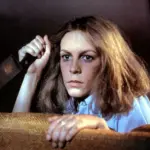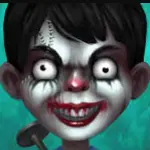Have you ever tried to recall some decent horror movie sequels? It'll probably take you less than 10 seconds because, let's face it, the list isn't that long.
Most movie genres make sequels for the purpose of turning them into cash cows, but this is especially true for horror movies. Ever since "Bride of Frankenstein" was released in 1935, horror sequels have been popping up like crazy. Look at the "Scream" series; it's already on its sixth installment. And the American franchise "Halloween"? It's got a ninth sequel called "Halloween Ends" (although I'm pretty skeptical whether it'll actually "end" with this). And let's not even start on the "Saw" series; "Saw XI" is already in the making after "Saw X" became a hit. But that's just the tip of the iceberg.

Here's the catch. Even with all these sequels, most horror movie fans, including myself, rarely find the same thrill and joy in these follow-ups as we did in the original movies. Quantity and quality seem to be inversely proportional when it comes to horror movie sequels—the more they are being made, the worse they get. So much so that these awful sequels end up burying the original movies that we all love, just like "Halloween Ends" did.
As a horror movie buff, I can't help but wonder, why are horror sequels so prolific? Why do they always seem to fall short of the original? And why are they rarely as surprising or as compelling as their predecessors?
Any seasoned horror film aficionado would be aware of the high demand for such flicks and that they are a big business. Production companies view making horror films as an investment and are primarily interested in the return they'll get on their money. Horror movies, especially successful ones, often yield a hefty profit compared to their low production costs. Essentially, low-budget horror films are most likely to provide a significant return on investment.
Take the "Final Destination" series for example. So far, it consists of five movies. The first three films had budgets of around US$25 million. Except for "Final Destination 2," which only grossed US$90 million at the box office, the other two racked up well over US$110 million. That's a pretty sweet deal if you ask me. The last two films in the series had an average budget of US$40 million each, and the fourth one, "The Final Destination," generated a whopping US$186 million in box office receipts. That's the highest in the series!

In 2011, Tony Todd, one of the series' main stars, said that if the fifth instalment earned as much as the fourth, Warner Brothers would be open to making another sequel. But in the end, the box office takings of "Final Destination 5" was nearly US$30 million less than that of its predecessor, and the entire series went on a long hiatus.
But hey, we're in an era where Hollywood loves to revisit old projects. So, the sixth instalment, "Final Destination: Bloodlines", is finally in the works. Currently, production works are ongoing, and it's set to hit the big screen in 2025. This series, which was put on hold for failing to attain the expected return on investment, is getting a reboot likely because low-budget horror films are now seen as a safe bet for large production companies like Warner Brothers.
For this reason, it's not surprising that production companies continue to churn out new horror movie sequels, both in the past and present. In an increasingly uncertain market, replicating past successes is a safer and more predictable move than coming up with brand new concepts. Plus, a successful horror movie would already have an established audience base, meaning that people would readily pay to see the sequel regardless of its quality. Which shrewd business person wouldn't want to get in on that kind of surefire deal?
Let's be real, among the tons of horror sequels out there, a lot of them are kind of lame. You can't just blame the big movie companies for wanting to make a quick buck, though. There's more to it. One big problem is that these sequels end up being way too similar to the original movie. As such, they become predictable and boring. For instance, if you're watching a "Halloween" sequel, you know Michael Myers is going to show up with his mask and a knife on Halloween to commit a murder. And there's always going to be someone who manages to fight him off and survive till the end. The same goes for the "Saw" series. With every new sequel, you know that the creepy little puppet Billy is going to make an appearance on a tricycle to teach people some brutal and bloody survival skills. And don't get me started on "The Purge" – it's just another escalating bloodbath that keeps getting messier and more violent.

These recurring settings and elements definitely made these series famous in the first place, but now they're just overused. It's like the creators are just banking on their chemistry with the audience to simply present things rather than meet their expectations. They, for one, have slacked off and are no longer trying to surprise us anymore. Aesthetic fatigue from all the repetition causes the originally cool and innovative stuff from the past to get old.
Ironically, while we're all annoyed by how sequels keep recycling the same old stuff, some of them fail because they completely ditch the essence that made the original movie great. Take "The Conjuring" series by James Wan. The first two instalments are all about a modern exorcism story based on true events, with the Warrens playing the exorcists and guiding us through the whole process. The exorcism itself is the main source of horror. Plus, the demons emerge in different forms under varying circumstances in an abstract and elusive manner, giving us some unforgettable spooky moments. And then came along "The Conjuring 3." Although it claims to also be inspired by true events, it spends most of the time on the love story between Ed and Lorraine Warren. The demons become way too obvious, taking away all the mystery and scariness. So, in the end, "The Conjuring 3," which lacks the sinister vibe and isn't great on the storytelling front, just doesn't cut it as a worthy horror sequel.
Here's the deal with horror movie sequels: they've got to change things up a bit, while still staying true to what made the original flick great. They need to surprise us, but not so much that our beloved series become unrecognizable. It's a tough act balancing between familiarity and novelty, no doubt about it. Take "Happy Death Day 2U", for instance. It is the sequel of "Happy Death Day" and was directed by the same filmmaker, Christopher Landon. It retains the time-loop thing and character settings, and throws in some parallel universes to infuse a sci-fi ambiance. The fifth "Scream" movie brings back the original trio—Sidney, Gale, and Dewey—and introduces a new batch of survivors, Sam and Tara, who eludes Ghostface's deadly pursuit. Coupled with the same blood-curdling thrills, these fresh faces make the continuity of the series possible. And guess what? The seventh sequel is now in the pipeline!

Now, I've got to be honest here. As a die-hard horror fanatic, I'm pretty forgiving when it comes to clichés and repeated plots. Maybe that's why we keep getting swarmed by these less-than-stellar sequels. But I also think that we horror enthusiasts are a pretty open-minded bunch. We're game for something new and daring. So, if these sequels decide to push the envelope and take some risks, they could hit the jackpot. If success is within reach, why not take a leap of faith and go for it?












































![The 10 Most Anticipated HORROR Movies of the 2nd Semester of 2023 [Part 2]](https://img.peliplat.com/api/resize/v1?imagePath=peliplat/article/20230626/04278072c00ebfe483fca3bcc10ebc40.png&source=s3-peliplat&mode=FILL&width=720&height=340&limit=false)


View replies 0